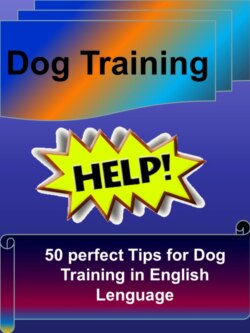Читать книгу Dog Training - 50 perfect Tips for Dog Training in English Lenguage - John Trump - Страница 12
ОглавлениеTraining your puppy – eliminating biting behaviors
Bringing home a new puppy is always an exciting time. Introducing the new puppy to the family should be fun for both yourself and your puppy. One of the first challenges, however, to the excitement of the new puppy, is curbing inappropriate puppy behaviors.
Preventing biting and mouthing
Biting and mouthing is a common activity for many young puppies and dogs. Puppies naturally bite and mouth each other when playing with siblings, and they extend this behavior to their human companions. While other puppies have thick skin, however, humans do not, so it is important to teach your puppy what is appropriate, and what is not, when it comes to using those sharp teeth.
The first part of training the puppy is to inhibit the biting reflex. Biting might be cute and harmless with a 5 pound puppy, but it is neither cute nor harmless when that dog has grown to adulthood. Therefore, puppies should be taught to control their bit before they reach the age of four months. Puppies normally learn to inhibit their bite from their mothers and their littermates, but since they are taken away from their mothers so young, many never learn this important lesson. It is therefore up to the humans in the puppy’s life to teach this lesson.
One great way to inhibit the biting reflex is to allow the puppy to play and socialize with other puppies and socialized older dogs. Puppies love to tumble, roll and play with each other, and when puppies play they bite each other constantly. This is the best way for puppies to learn to control themselves when they bite. If one puppy becomes too rough when playing, the rest of the group will punish him for that inappropriate behavior. Through this type of socialization, the puppy will learn to control his biting reflex.
Proper socialization has other benefits as well, including teaching the dog to not be fearful of other dogs, and to work off their excess energy. Puppies that are allowed to play with other puppies learn important socialization skills generally learn to become better members of their human family. Puppies that get less socialization can be more destructive, more hyperactive and exhibit other problem behaviors.
In addition, lack of socialization in puppies often causes fearful and aggressive behaviors to develop. Dogs often react aggressively to new situations, especially if they are not properly socialized. In order for a dog to become a member of the community as well as the household, it should be socialized to other people, especially children. Dogs make a distinction between their owners and other people, and between children and adults. It is important, therefore, to introduce the puppy to both children and adults.
The best time to socialize a puppy to young children is when it is still very young, generally when it is four months old or younger. One reason for this is that mothers of young children may be understandably reluctant to allow their children to approach large dogs or older puppies. This is especially true with large breed dogs, or with breeds of dogs that have a reputation for aggressive behavior.
Using trust to prevent biting
Teaching your puppy to trust and respect you is a very effective way to prevent biting. Gaining the trust and respect of your dog is the basis for all dog training, and for correcting problem behaviors.
It is important to never hit or slap the puppy, either during training or any other time. Physical punishment is the surest way to erode the trust and respect that must form the basis of an effective training program. Reprimanding a dog will not stop him from biting – it will simply scare and confuse him.
Training a puppy not to bite is a vital part of any puppy training program. Biting behaviors that are not corrected will only get worse, and what seemed like harmless behavior in a puppy can quickly escalate to dangerous, destructive behavior in an adult dog.
